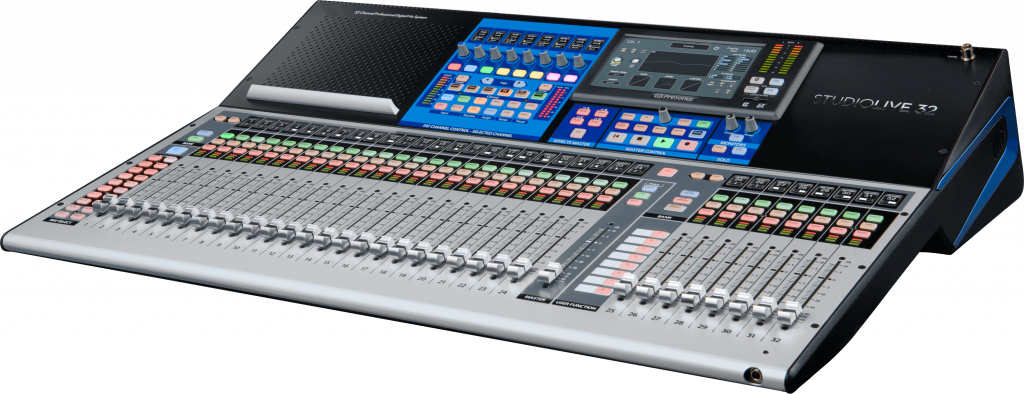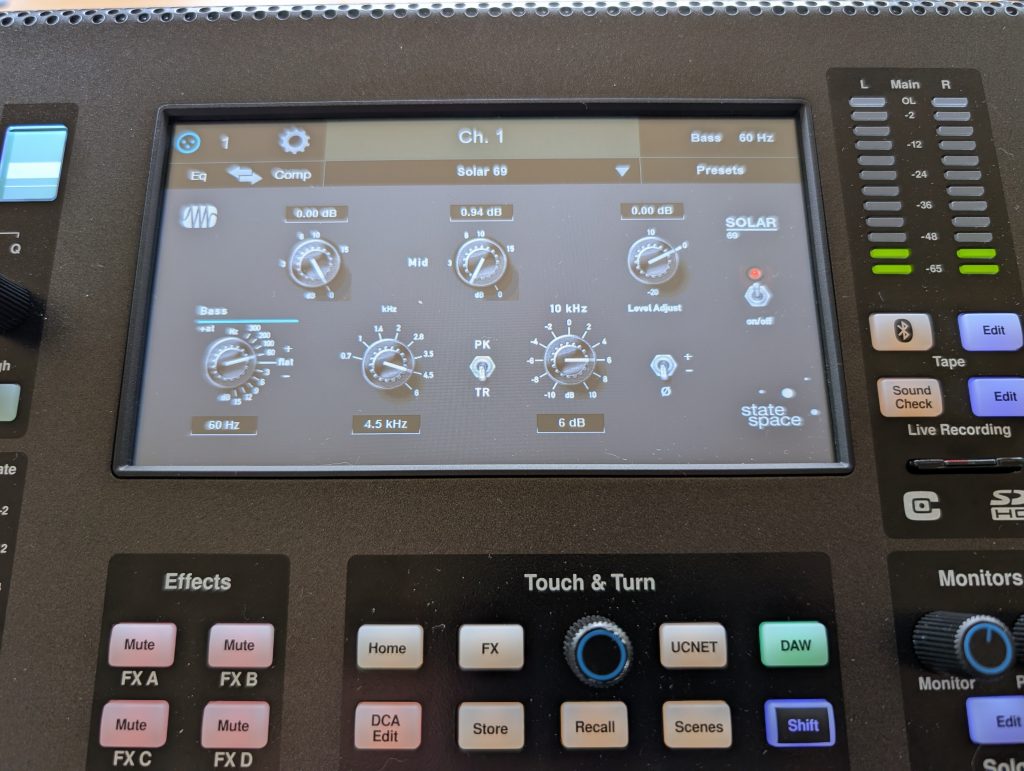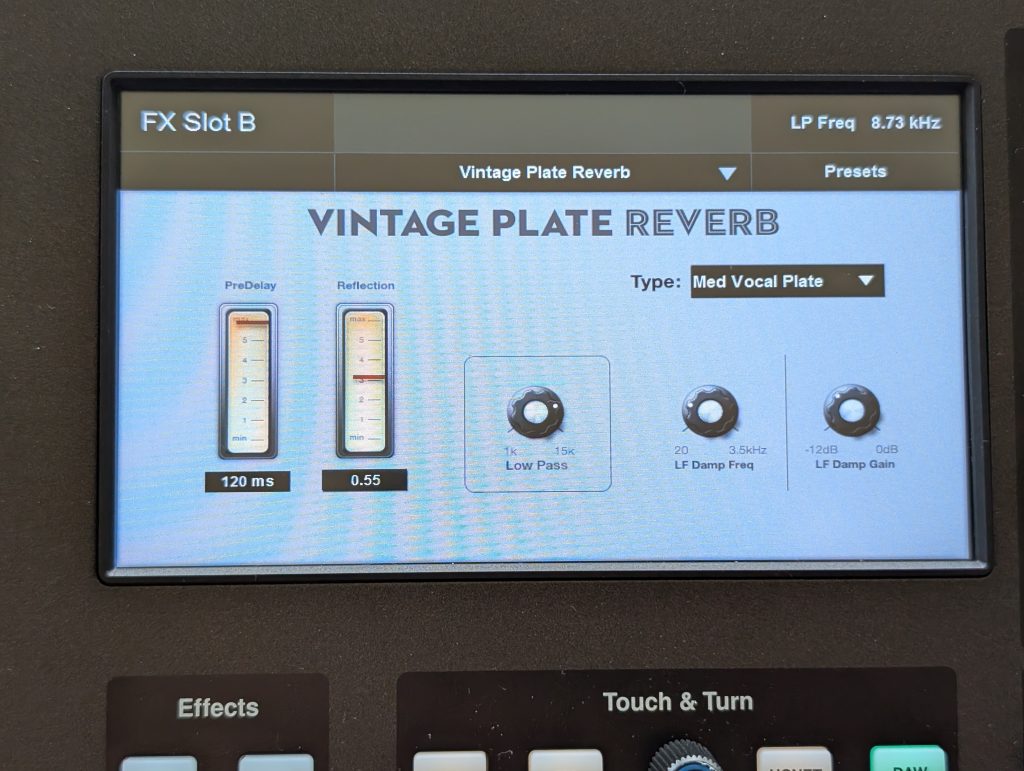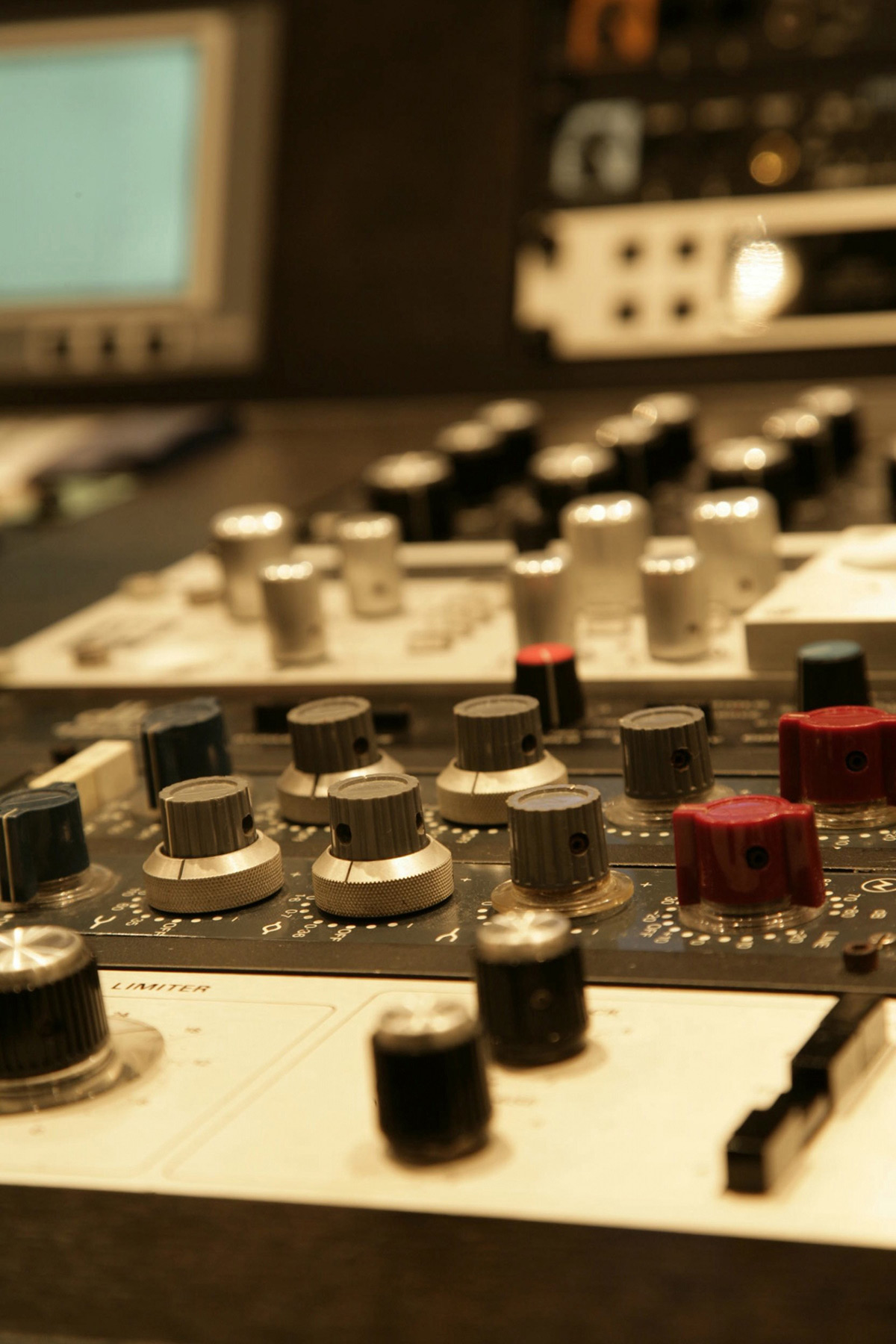
PreSonus StudioLive SE32 Series III Review
Hybrid consoles claim to bridge the gap between studio precision and live practicality, few actually deliver.
The PreSonus StudioLive SE32 Series III stands out as a rare exception.
We recently put it through its paces in a studio session, using much of our normal session gear, and found it to be a surprisingly refined and musical console.
Session Gear & Test Environment
Unlike our API 2448, the SE 32 Series III is very easy to move around and has an onboard power supply!
After a quick firmware update (to bring it to the most recent version using the Universal Control app) a few quick connections later, we were ready to rumble!
The SE32 was set up in our room using our KRK V8 S4 monitors. These monitors which were in use for the last couple of years have recently been replaced with a pair of ATC SCM-45a Pros (which will be reviewed very soon) but were an ideal match for the SE32 Series III.
We used our Pearl Reference Pure kit (with a 22″ kick, 12″ rack, and 16″ floor tom) along with a Pearl Dennis Chambers Signature 14″x5″ cast aluminum snare (if you’re not familiar, it’s a precision-machined snare with a 3mm-thick aluminum shell, 5mm reinforcement rings, and 12/8 lug configuration) and a compliment of Meinl Byzance cymbals.
I fully believe that an acoustic drum set is likely the very best way to evaluate both transient detail and low-end clarity.
The mics used were as follows:
- Kick: Audix D6 (inside) + Moon Mic (outside)
- Snare: SM57 (of course)
- Toms: Audix D2s
- Overheads: Neumann KM184s
- Room: Microtech Gefell UM71s
- Electric Guitars: beyerdynamic M88TG
- Vocals: Violet Design Amethyst Classic
Instruments we used during the testing session featured a Fender USA Stratocaster with a channel-bound neck, an Alembic Epic 5-string bass, Moog Sub 37, and an Akai MPC Live II.
All but the guitars were DI’d with a Radial JDI or plugged directly into the line inputs. One thing to keep in mind is only inputs 17-32 will accept 1/4″ inputs with the combo jack. Inputs 1-16 are XLR only.
Sound Quality & Preamps
The StudioLive’s XMAX preamps offered lots of clean gain, low noise, and strong dynamic handling across the board. Kick and snare transients stayed tight and punchy, and even delicate room mic details came through without smear or compression artifacts (unless I dialed them in using the onboard effects, of course). The onboard preamps are certainly equal to (or better than) anything else I have heard in or somewhat above the price range.
The Dennis Chambers aluminum snare in particular revealed just how transparent the SE32’s front end really is—articulate crack, bright attack, and no midrange smearing.
I would say that the preamps are more on the neutral side (rather than being overly warm or worse yet too bright) but with great EQ and compression onboard, I think neutral is the way to go.
Interface & Workflow
Even without consulting the manual, the touchscreen and control surface felt intuitive. Routing was straightforward, and functions like soloing, EQ tweaks, and bus assignments were easy to access.
Recording to SD card worked seamlessly—perfect for full band rehearsal recording, live gigs, or evenredundant live recordings.
Unfortunately, overdubbing isn’t possible on the SD card, which limits its utility for full DAWless workflows.
If this unit could overdub it would be the ultimate PortaStudio (sorry Tascam). Maybe in the future???
That said, these days I would guess that almost everyone is going to want to take advantage of the editing and manipulation that is only possible using a DAW.
Which brings us to the fact that the console includes a perpetual license for PreSonus Studio One Professional!
As you’d expect integration with the DAW is tightly woven. I’m not an expert in Studio One, but I have had it installed on our studio PC for a few years and explored the environment.
If you’re not fully in the Pro Tools (or other DAW camp) Studio One might be the perfect place to be, especially with all the great add-ons included with the Pro version!
At the end of the day, all DAWs are good, it really just comes down to choices in workflow and overall environment. Whether or not you’re considering purchasing a StudioLive console, it’s easy enough to visit Presonus and download a free 30 day demo to see if Studio One is the right DAW for you:
https://www.presonus.com/pages/studio-one-pro-free-demo
Let’s not forget, in addition to being a mixer the SE32 is also a full featured digital interface with a 64×64 channel capacity over USB.
Also worth noting: the inclusion of a three-year warranty—far better than the typical one-year coverage most mixers offer. It speaks to PreSonus’ confidence in the longevity of this console. Another thing that is a major tick in its favor is that PreSonus offers a very long support period for its hardware, with even much older hardware receiving complementary feature and usability updates.
DSP & Processing

Compression and EQ were easy to dial in, but the graphic metering for compression occasionally lagged slightly behind the audible changes. This doesn’t affect the sound, but may throw off engineers who rely heavily on visual feedback.
There are multiple EQ and Compressor types that are included, ranging from vintage selections to more modern types. Sometimes, you get the feeling that some plugins are much more about the skin than the sound…not the case here. Each modeled processor had a unique sound and feel.

The onboard gates were a pleasant surprise—easy to set, responsive, and especially effective on toms and kick.

The reverbs were also above expectations, with natural tails and studio-grade clarity that rivaled common plugin options.
Build Quality, Connectivity & Form Factor
With 32 channels and a dedicated master fader, all featuring touch-sensitive motorized faders, the SE32 is impressive right out of the box. Navigation between layers is fluid, and the faders respond accurately to automation and recall.
Perhaps just as important is the hardware I/O design. All physical connections use XLR, combo jacks, ¼” TRS, or RCA. There are no DB25 breakout ports—just standard, readily available cabling. For mobile engineers, churches, and venues with limited support gear, this is a huge convenience.
The console also supports full remote mixing via networked devices, though we didn’t test this feature directly. Combined with user lockout functions, this makes the SE32 well-suited for institutional installs where ease of use and access control are important.
Pros and Cons Summary
Pros:
- Clean, open sound quality with low-noise preamps
- Logical, intuitive touchscreen workflow
- Solid physical build and responsive faders
- Seamless integration with Studio One Pro (license included)
- Excellent gates and effects
- Three-year warranty
- No DB25 connectors—standard, user-friendly I/O
- Remote mixing support with user lockout functionality
Cons:
- Maximum sample rate of 48 kHz may limit high-res workflows
- No overdubbing capability when recording to SD
- Slight delay in compression display response
Final Verdict
The StudioLive SE32 Series III is more than just a digital mixer—it’s a full-scale production and performance hub. Despite a few limitations, the feature set, sound quality, and integration with Studio One make it a remarkably complete package. For the price point, channel count, and included software, it represents one of the best values in the hybrid mixer market.
Rating: 8.8/10
A powerful, flexible console that excels in both studio and live settings—and delivers genuine value.
